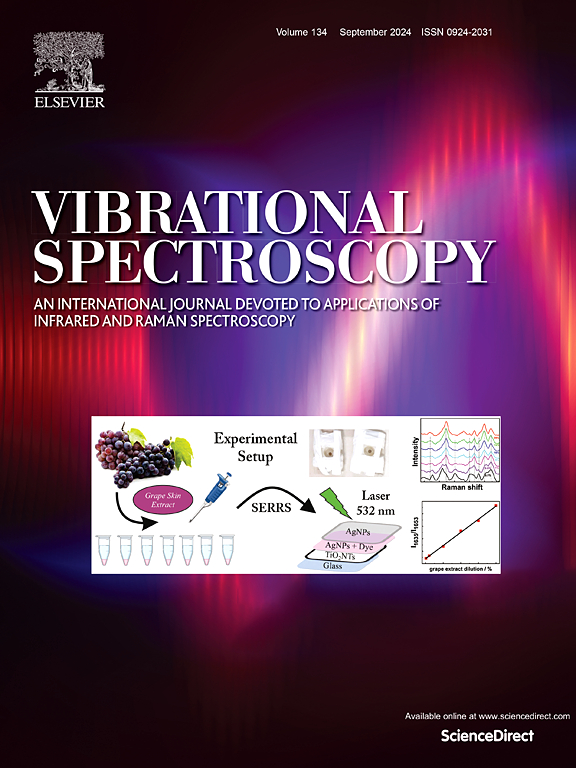森林凋落叶水分探测的近红外光谱与集合学习模型
IF 3.1
3区 化学
Q2 CHEMISTRY, ANALYTICAL
引用次数: 0
摘要
森林凋落物含水率是评价森林生态系统稳定性和预测森林火灾风险的重要指标。传统的近红外光谱方法在物种适用性和模型精度方面存在局限性。为了提高检测泛化能力和准确性,本文提出了一种基于差分进化(DE)算法优化的含水率检测模型,并引入改进的三角核函数(ITK)用于最小二乘支持向量机(LSSVM)回归预测,构建了基于DE-LSSVM-ITK的凋落物含水率检测模型。该模型以蒙古栎、水曲柳和落叶松的森林凋落物为研究对象,采用10倍交叉验证策略对10个最优模型进行训练和集成,以测试集上的平均预测结果作为最终输出。实验结果表明,DE-LSSVM-ITK集成模型具有较高的预测精度和鲁棒性,适用于构建不同树种含水率检测模型。这为森林生态监测和防火提供了可靠的技术途径。本文章由计算机程序翻译,如有差异,请以英文原文为准。
Near-infrared spectroscopy and ensemble learning modeling for moisture detection in forest floor leaf litter
The moisture content of forest floor litter is a critical indicator for assessing forest ecosystem stability and predicting wildfire risks. Traditional near-infrared (NIR) spectroscopy methods face limitations in species applicability and model accuracy. To enhance detection generalization capability and accuracy, this study proposes a moisture content detection model optimized by differential evolution (DE) algorithm and introduces an improved triangular kernel function (ITK) for least squares support vector machine (LSSVM) regression prediction, constructing a DE-LSSVM-ITK-based litter moisture content detection model. Using forest floor litter from Quercus mongolica, Fraxinus mandshurica, and Larix gmelinii as research subjects, the model employed a ten-fold cross-validation strategy to train and ensemble 10 optimal models, with the average prediction results on the test set serving as the final output. Experimental results demonstrate that the DE-LSSVM-ITK ensemble model achieves higher prediction accuracy and robustness, making it suitable for constructing moisture content detection models for different tree species. This provides a reliable technical approach for forest ecological monitoring and fire prevention.
求助全文
通过发布文献求助,成功后即可免费获取论文全文。
去求助
来源期刊

Vibrational Spectroscopy
化学-分析化学
CiteScore
4.70
自引率
4.00%
发文量
103
审稿时长
52 days
期刊介绍:
Vibrational Spectroscopy provides a vehicle for the publication of original research that focuses on vibrational spectroscopy. This covers infrared, near-infrared and Raman spectroscopies and publishes papers dealing with developments in applications, theory, techniques and instrumentation.
The topics covered by the journal include:
Sampling techniques,
Vibrational spectroscopy coupled with separation techniques,
Instrumentation (Fourier transform, conventional and laser based),
Data manipulation,
Spectra-structure correlation and group frequencies.
The application areas covered include:
Analytical chemistry,
Bio-organic and bio-inorganic chemistry,
Organic chemistry,
Inorganic chemistry,
Catalysis,
Environmental science,
Industrial chemistry,
Materials science,
Physical chemistry,
Polymer science,
Process control,
Specialized problem solving.
 求助内容:
求助内容: 应助结果提醒方式:
应助结果提醒方式:


